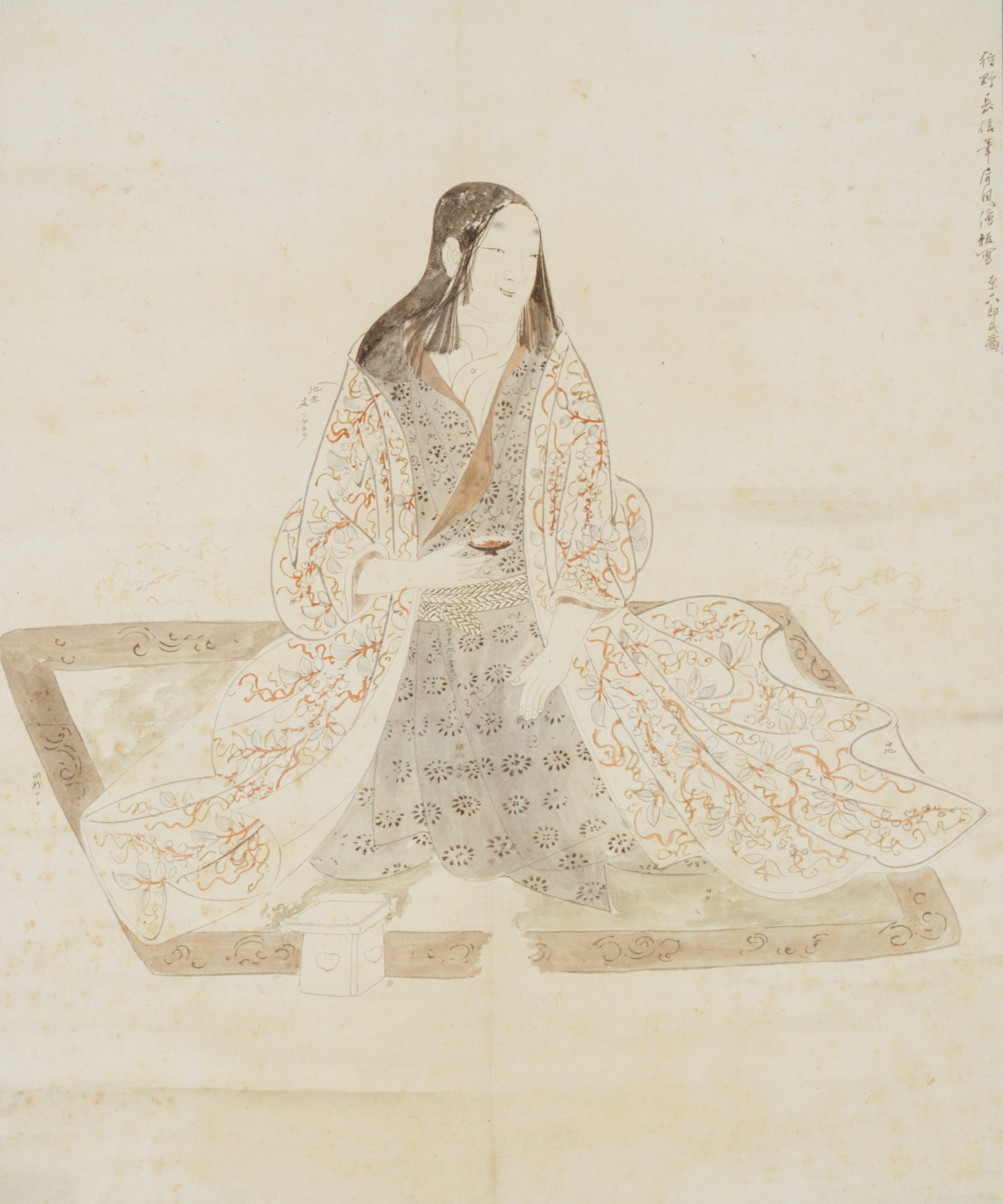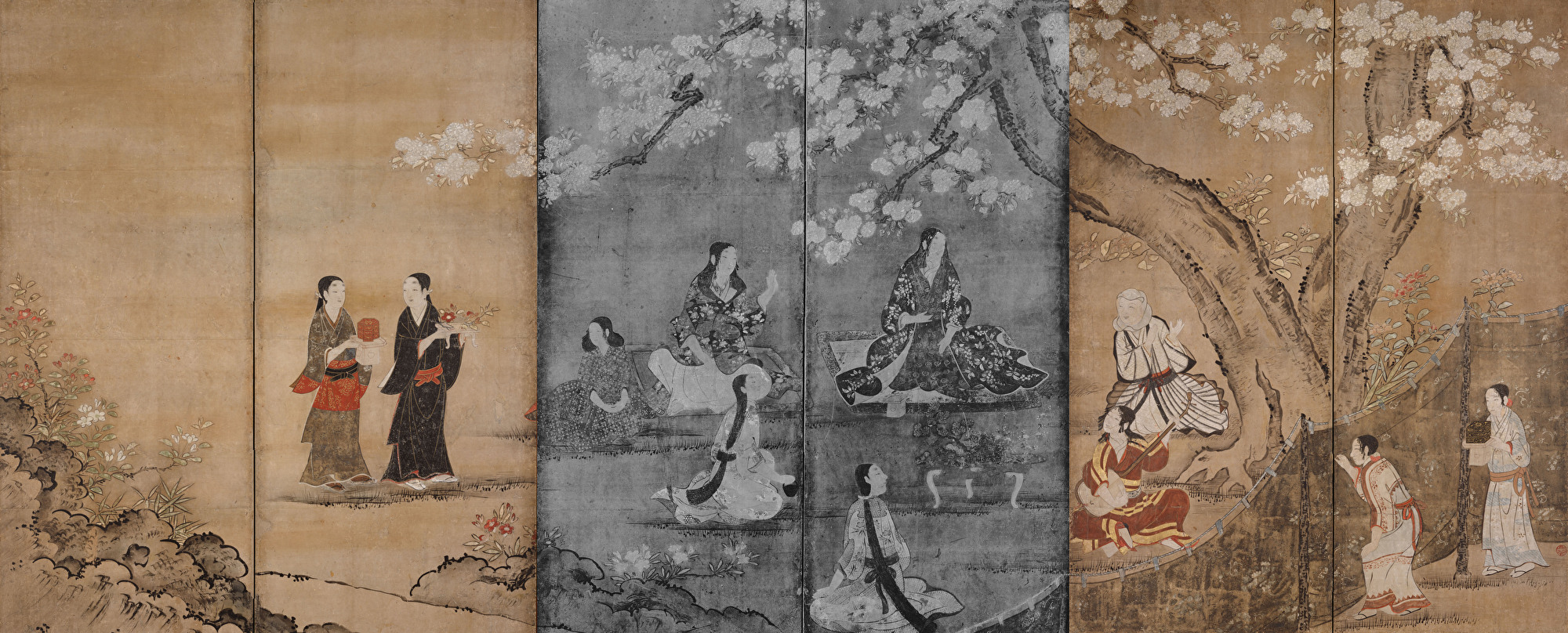First public release! "Hanashita Yurugu folding screen" that restored the lost part
The “Hanashita Yurakubu folding screen” is a national treasure that depicts people enjoying cherry blossom viewing under the cherry blossoms in full bloom. This is an exhibition where you can experience a fantastic space with projection mapping images and sound production, centering on the high-definition reproductions.
The national treasure “Hanashita Yuraku-zu Byobu” is a banquet centered on a lady under the cherry blossoms in full bloom on the right side (right ship), and a Furyuodori dance on the left (left ship). It depicts people who look at it. The people who dance are wearing the latest fashion at the time when the “Kabuki Odori” fashion was in fashion. Trees and rocks are expressions that have been calmed down mainly with ink, while people wear costumes that are beautifully drawn using gold and mud.
The original is a valuable work drawn about 400 years ago in the early 17th century, but the central part of the right ship was lost during the Great Kanto Earthquake in 1923. The high-definition reproductions on display are the restored parts that were lost from the image of the glass plate in the Meiji era that reflected the appearance before the disappearance, and this time it will be the first public release.
*This exhibition is a special exhibition “Experience! Traditional Japanese Performing Arts” (March 10 to May 24, 2020 / Sponsor: Agency for Cultural Affairs, Incorporated Administrative Agency Japan Art and Culture Promotion Association, Tokyo National Museum, Cultural Property Utilization Center) , Yomiuri Shimbun). To prevent new coronavirus infection, unfortunately the exhibition was canceled, so only this section will be limited to experience monitors.
About the national treasure Hanashimo Yuraku folding screen

National treasure Hanashimo Yurakubu folding screen (left ship part) Naganobu Kano 17th century Edo period Tokyo National Museum Collection
The Hanashita Yurugu folding screen is a folding screen depicting the state of cherry blossom viewing around the beginning of the Edo period. The women in the latest fashion are dancing. It is a group of men’s costumes with a sword on their waist. It may be a copy of the date of Okuni Kabuki, which was the fashionable origin of Kabuki at the time.
The depiction of a person dancing with his soles showing is just stop motion. With the addition of clapping to the shamisen, it seems that even a faint singing voice can be heard. It is a work that captures the hearts of Japanese people who love nature and love spring, and who live in the present age, feel excited and want to sing.
The author is known as Kano Naganobu (1577-1654). Naganobu, the youngest younger brother of the Kano school and Kano Eitoku who was active mainly in Kyoto, was called to Sumpu (Shizuoka City) by Ieyasu Tokugawa, and then descended to Edo for the first time. Although it has been used for a long time by the Edo Shogunate, this work is a valuable standard work because there are few existing works.
At the time of the Great Kanto Earthquake in 1923, the two parts of the right fan center of the Hanashita Yuraku folding screen were lost. Currently, it is made into a folding screen by supplementing plain paper on the part that has disappeared. I have not been able to show the highlights of this work, the scenes of women’s talking, in the exhibitions so far.
Restoration of the disappeared part of Hanamoshi Yurakubu folding screen

National treasure Hanashimo Yurakubu folding screen Kano Naganobu Exhibition at the National Treasure Room of the Tokyo National Museum Main Building (2019)
The only thing that conveys the full picture of the Hanashita Yugaku folding screen is the glass plate photograph (Tokyo National Museum collection) taken around 1911 (1891). Image data was acquired by a high-resolution scanner to enlarge the image to full size.
Scanning was performed once at 2400ppi for the entire right vessel, once at 1200ppi only for the lost part, and 7 times at 4800ppi, and the data was processed to clear the image, and high resolution that can withstand full-scale printing. I made black and white image data.

A glass plate photograph of a folding screen of Hanashita, around 1868, Tokyo National Museum
The next step was color reproduction. First, we tried digital color conversion based on the existing color data taken by Canon Inc. this time.
However, it did not work because the color balance and contrast of the data of the lost part and the data of the existing part are different.
Therefore, we were able to clarify the color balance of the lost part by once converting the color data of the existing part to the approximate black and white scale and checking it.

Hanamoshi Yuraku screen folding screen Sadajiro Mizoguchi brush Meiji era Tokyo National Museum
By this processing, it is possible to reproduce colors by digital processing for the parts with the same motif on the existing screen, such as cherry blossoms, trunks, and the ground. However, even if we know the color balance of unique motifs such as people’s costumes, we cannot know what kind of color it is with current technology.
The only clue left behind is the writing of the ground red, white, and roque (green) in the “Hanashita Yuraku-zu folding screen excerpt”, which is a copy of this folding screen during the Meiji era.
Therefore, we extracted the motif from the black and white image data using the technology called RayBrid, which is also used in movies, TV, commercials, etc., and colored only the part that has the basis for the color.
With regard to the restoration reproduction this time, as a result of focusing on the color reproduction by digital processing based on scientific values and records, part of it remains in black and white, which has never been seen before.

Data is taken from a glass plate photograph with a high-resolution scanner and enlarged to actual size. A national treasure Hanashita Yurugaku folding screen (right ship). *The black and white part is a composite of a glass plate photograph, before coloring

Colors are reproduced by digital processing only for the part that has the basis of color [High-definition reproduction] National treasure Hanashita Yurugaku folding screen (right ship)
[image]
Original shooting Screen production : Canon Inc./Kyoto Cultural Association
Glass plate Scanning : I major
Restoration part CG production : Msoft Inc.
Projection mapping : Prototype Company Limited
Joint research project to utilize Japanese cultural properties using high-definition reproductions
High-definition reproduction “National treasure Hanashita Yurakubu folding screen” is a cultural asset utilization center of the National Cultural Properties Organization and Canon Inc. Collaborative research project for. Canon Inc. and the Kyoto Cultural Association, a non-profit organization, jointly carry out “Suspension (Spelling)”, with the aim of protecting many original people’s valuable cultural assets from ancient Japan while protecting the original works from deterioration. ) Project” (official name: Cultural Heritage Future Succession Project).
>Bunkatsu & Canon Project
Cultural Property Utilization Center
The Cultural Property Utilization Center is an organization established in July 2018 under the National Cultural Properties Organization in order to increase the opportunities for various people in Japan and overseas to come in contact with Japanese cultural properties. Nickname is . We are developing new contents and programs that utilize cultural properties so that we can obtain rich experiences and learning through them. In addition, we have established a consultation service for promoting the lending of collections at the National Museum, disclosure of digital information on cultural properties, and the environment for preservation of cultural properties.
>Bunkatsu official website
>Twitter
>Instagram
>YouTube















































